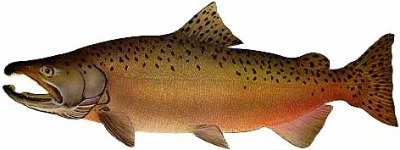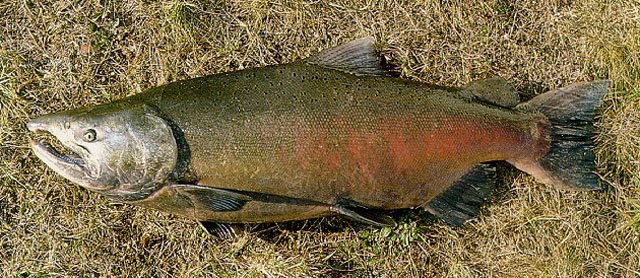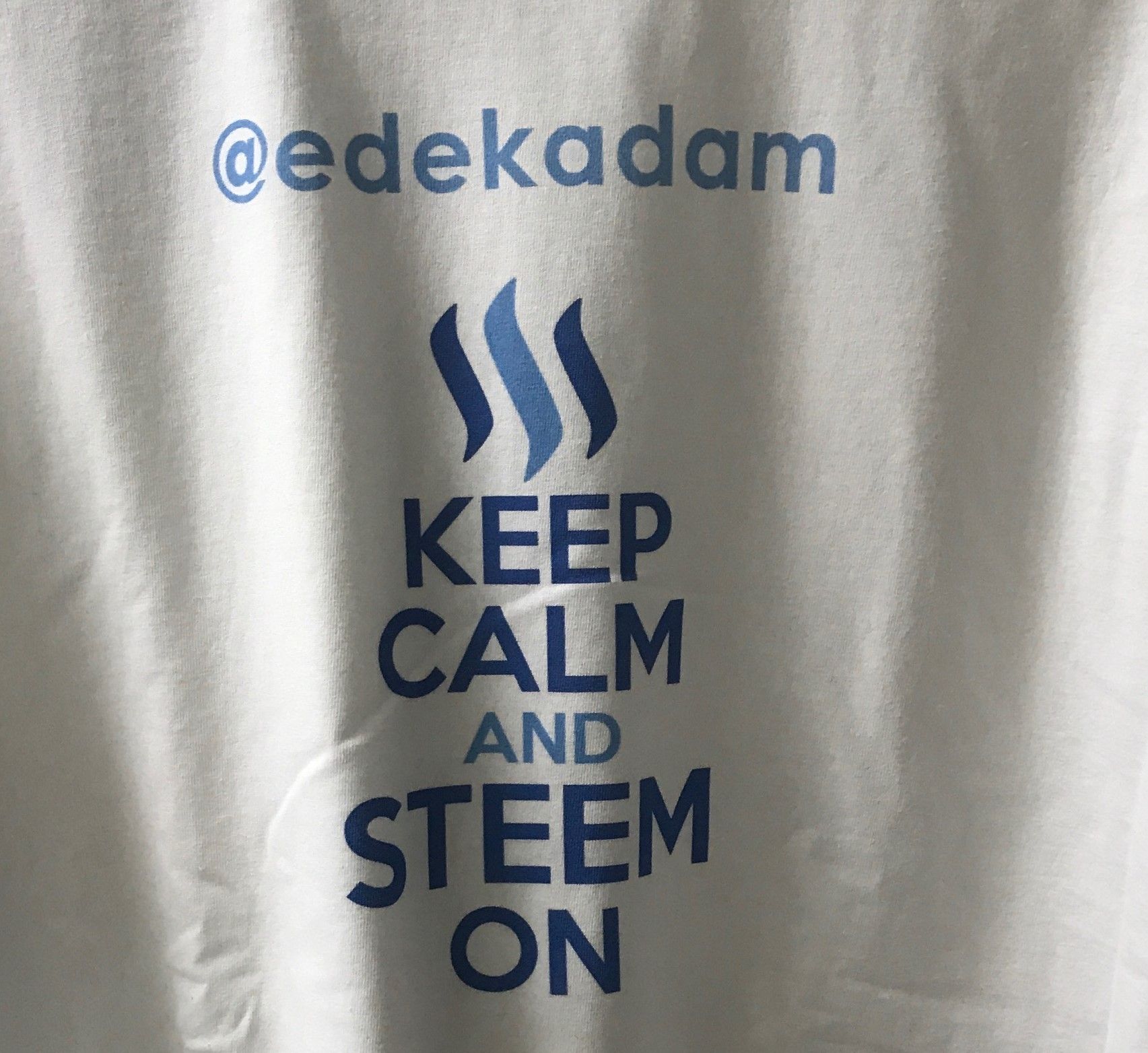The King Salmon as most of the salmonids is species which migrate long distances for spawning. It starts life as an tiny egg in the cold course of upper rivers hatching and feeding until it reaches proper size to migrate to seas and oceans to get access for better nutrition source. After it reaches maturity it comes back to the origins while it's body transforms (especially males - burst or hormons) into monstrous appearance with scary jaws and teeth. During all the process of spawning migration those fishes barely eat or don't eat at all using their accumulated fat as an backup for this one way trip. Yes one way trip because after spawning they are dying fertilizing the environment with their own flesh which is really big part of the nature cycle in this pure of nutrition river areas.
This fish is really impressive anglers target, known as strong fighter not easy to capture. Surely deserves for the title of King Salmon.
Before you will see the video a short information about this fish.
The King Salmon or Chinook Salmon (Latin: Oncorhynchus tshawytscha, Walbaum, 1792)
Classification
Kingdom: Animalia
Phylum: Chordata
Class: Actinopterygii (ray-finned fishes)
Order: Salmoniformes (Salmons)
Family: Salmonidae (Salmonids)
Genus: Oncorhynchus
Species: O. tshawytscha
Distribution
Arctic, Northwest to Northeast Pacific: drainages from Point Hope, Alaska to Ventura River, California, USA; occasionally strays south to San Diego in California, USA. Also in Honshu, Japan, Sea of Japan, Bering Sea and Sea of Okhotsk. Found in Coppermine River in the Arctic. Several countries report adverse ecological impact after introduction .
Size / Weight
Max length : 150 cm;
common length : 70.0 cm;
max. published weight: 61.4 kg;
max. reported age: 9 years;
Environment
Marine; freshwater; brackish; benthopelagic; anadromous;
depth range 0 - 375 m;
Temperate; 4 - 25°C;
72°N - 27°N, 136°E - 109°W;
Short description
Distinguished by the small black spots on the back and on the upper and lower lobes of the caudal fin, and the black gums of the lower jaw . Body fusiform, streamlined, noticeably laterally compressed in large adults, somewhat deeper than other species. Gill rakers wide-spaced and rough; pelvic fins with axillary process. Fish in the sea are dark greenish to blue black on top of head and back, silvery to white on the lower sides and belly; numerous small, dark spots along back and upper sides and on both lobes of caudal; gum line of lower jaw black. In fresh water, with the approach of the breeding condition, the fish change to olive brown, red or purplish, the color change being more marked in males than in females
Biology
Adults return to natal streams from the sea to spawn. Fry may migrate to the sea after only 3 months in fresh water, some may stay for as long as 3 years, but generally most stay a year in the stream before migrating. Some individuals remain close inshore throughout their lives, but some make extensive migrations. Also found in lakes. Possibly up to 375 m depth. Epipelagic. Food in streams is mainly terrestrial insects and small crustaceans; in the sea, major food items include fishes, crustaceans, and other invertebrates. Young are preyed upon by fishes and birds (such as mergansers and kingfishers); adults are prey of large mammals and large birds. Highly regarded game fish. Flesh is usually red, but some are white; the red meat commands a higher price. Marketed fresh, smoked, frozen, and canned. Eaten steamed, fried, broiled, boiled, microwaved, and baked. Viscera said to contain high vitamin A content and used successfully as food for hatchery fish
Supporting source: http://www.fishbase.org
Video
Pictures


STEEManians I want to especially thank for supporting:
@gregbit @margaretwise @glitterfart @hilarski @anahilarski @thearcanebear @edekadam @mynameisbrian @jga @choogirl @linzy13 @cecirod1218 @bibek @codypanama @donofa @fishdad
Here you can find some of my other posts/stories:
https://steemit.com/fishfacts/@edekadam/fish-facts-12-jeremy-wade-feat-the-white-sturgeon-video

Good post, full of info and good video !
Downvoting a post can decrease pending rewards and make it less visible. Common reasons:
Submit
Thanks @ctrl-alt-nwo :)
Downvoting a post can decrease pending rewards and make it less visible. Common reasons:
Submit
Awesome steem! Great information and wonderful pictures! I didn't know much about them till now, you are a great fisherman! Have a beautiful Friday! Are you going fishing this weekend?
Downvoting a post can decrease pending rewards and make it less visible. Common reasons:
Submit
Thank you @cecirod1218 :)
Downvoting a post can decrease pending rewards and make it less visible. Common reasons:
Submit
🙃🙃🙃🌻🌻
Downvoting a post can decrease pending rewards and make it less visible. Common reasons:
Submit
Wow!!! That's a big fish.
Great post my friend.
Upvoted :)
Downvoting a post can decrease pending rewards and make it less visible. Common reasons:
Submit
super creepy fish man! :-D upvoted
Downvoting a post can decrease pending rewards and make it less visible. Common reasons:
Submit
Looks creepy only at spawning time :)
Downvoting a post can decrease pending rewards and make it less visible. Common reasons:
Submit
This post received a 3.9% upvote from @randowhale thanks to @edekadam! For more information, click here!
Downvoting a post can decrease pending rewards and make it less visible. Common reasons:
Submit
Congratulations @edekadam! You have completed some achievement on Steemit and have been rewarded with new badge(s) :
Click on any badge to view your own Board of Honor on SteemitBoard.
For more information about SteemitBoard, click here
If you no longer want to receive notifications, reply to this comment with the word
STOPDownvoting a post can decrease pending rewards and make it less visible. Common reasons:
Submit